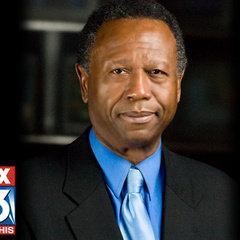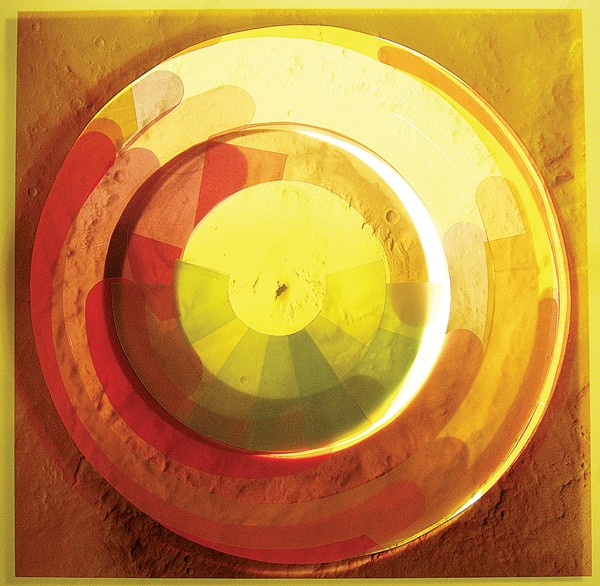Les Smith says the “silent majority” in Memphis needs to make its opinions known.
Month: June 2014
Thursday Music: Shell, Square, Detective Bureau!
Thursday has become logistically impossible from a live music standpoint. But the surplus is ours to enjoy.
The Levitt Shell: John Fullbright
Usually I see an acoustic guitar/harmonica combo and head for the exit. But this Fullbright guy is of a higher order. He has a musical depth that draws on stuff like Mose Allison. That multi-instrumental songcraft sets him apart from the sensitive SEC strummers.
Thursdays Squared: Trademark with 8-Ball Aitken.
Aitken, the all-time world band photo champion, joins the self-styled Motley Crue of country. Aitken. Dude. Trademark look like some rowdy sorts. Pull the muffler off your Prius and get over there.
The Buccaneer The Detective Bureau
We talked to Joe Restivo for our piece on Teenie Hodges. He’s made his place as the city’s most fiercely focused jazz and R&B guitar player. He’s played with everyone, probably a result of his focus on the art, not the technique. The Detective Bureau is his band. They draw on late 1960s-early ’70s jazz and Latin music. Nominal start at 10:30.
Potato Chip Scrambled Eggs

Migas!
There was a brief, glorious period in my life during which I thought I had invented a delicious breakfast dish that, it turns out, has long existed.
Migas translates from Spanish into “crumbs.” In Portuguese the word is migalhas. In both countries, “crumbs” are typically made with day-old bread, and a varying mix of meat, veggies, and seasonings. There’s also a Jewish version that combines old matzo with eggs.
The migas that I thought I had invented is a Tex-Mex dish made with leftover tortilla chips, or tortillas, and eggs, plus regional ingredients like salsa, cheese, beans, and avocado.
When my inspiration hit, I was standing in my kitchen, holding a near-empty bag of corn chips, wondering what to do with them.
The chips were all too small for dipping, but I still hated to waste them. Instead of tossing the tortilla crumbs to my deserving hens, I tossed them into a hot pan of bacon and grease. A few moments later, when the bacon was done to my liking, I tossed in some raw garlic, stirred it around, and then poured a couple of beaten hen eggs into the pan. After a couple of stirs, I turned off the heat, seasoned with salt and pepper, adorned with salsa, and christened my dish Eggs with Dregs.
By the time I first saw migas on a menu, in a northern New Mexico restaurant, I had already experimented with the dish several times. I read the menu description of migas with a mixture of disappointment and excitement. The notoriety that I had assumed was coming my way for creating Eggs with Dregs vanished before my eyes, but despite that disappointment I couldn’t wait to taste what this New Mexican cook would do with my recipe. It wasn’t much different, although being in northern New Mexico there was red chile mixed in. And being in a restaurant, whole chips were used, not dregs.
My propensity to experiment with chips and eggs reared its head again on a recent car camping trip. This foray lead to another version of migas that, after a spirited Google search, I feel I can legitimately call my own. Instead of corn chips, this dish incorporates potato chips-preferably Jalapeno Cheddar potato chips. As with migas, using crumbs is a good way to be thrifty, but whole chips are classier.
The idea for potato chip migas came while I was preparing a nice greasy breakfast in a cast iron skillet. As I contemplated the scrambled eggs that were to come, I noted, sadly, that it sure would be nice to have some potatoes sizzling in that bacon grease.
Not just potatoes, but cooked potatoes, already soft, cut into cubes or slices that were ready for the grease, in which a crunchy, pan-fried skin would be applied. Alas, I had no cooked potatoes and was miles from any place that sold them.
What’s worse, arguably, is that I’d also forgotten my bottle of hot sauce.
It was only after I had added my lonely eggs to the bacon pan that my eyes fell upon a bag of Jalapeno Cheddar potato chips in the food basket. That’s when I knew that my little culinary equation would be balanced. I added some of these chips to the pan of eggs and bacon, gave it a stir, and potato chip migas was born. It was great, but after spending some time with the recipe I now realize that I got lucky that first time. I had initially added those potato chips as an afterthought. It turns out that the last minute is the only acceptable time to add them.
Corn chip migas, by contrast, are more forgiving, primarily because soft corn chips, or corn tortillas, are as delicious, in a different way, as crunchy corn chips. But soggy potato chips are much less appealing. For potato chip migas to work, those chips must be crunchy. While corn chips can be added to the beginning, middle, or end of your greasy breakfast, potato chips should only be added at the tail end of the scrambling process.
In a way, this makes it very easy. All one must remember to do is scramble some eggs, and toss in potato chips, or crumbs thereof, when the eggs are nearly done. The outcome depends entirely on the quality of chip and your proficiency at scrambling eggs.
I follow the less-is-more school of egg scrambling. Less stirring and less cooking, that is. But I don’t skimp on the grease. Yeah, I like bacon grease, but olive oil is a great, if much different, alternative. If the bacon is too lean, sometimes I use both. Butter works too, but easily burns, and so it should be mixed with some other oil.
Heat the oil and/or bacon on medium-high heat. There should be enough oil to thoroughly coat the pan such that the eggs float on top when they are first added. We don’t want eggs touching bare pan, which can lead to the egg sticking and burning.
Before adding the eggs, you have the opportunity to add vegetables or spices, such as chopped garlic, garlic flower sections, asparagus, or other egg-friendly goodies. When these are properly done, pour in the beaten eggs.
Let the eggs set up briefly, then give it one quick stir. If using cheese, add it now. Then add the potato chips, stir again, briefly, and arrange the eggs in a pile, where they will stay warm, while any remaining gooiness is cooked firm.
Your potato chip migas are ready for consumption. I hope you enjoy it. And if anyone has already heard of this dish, please don’t tell me. Unless the recipe is really interesting.
Sounds of Silence in Memphis
As the band Pink Floyd once sang, “Hello, is there anybody out there?”

You know who you are. You’re that Memphis Midtown woman diligently working on her flower garden, just so you can make your home and the neighborhood look a little brighter. You’re that father of four children in Orange Mound who doesn’t know anything about a Facebook page and doesn’t want to, because you just like to keep your business and opinions to yourself. You’re that husband and wife who’ve decided to make the decision to forego that much-needed paint job for the house for another year, because your daughter needs those braces for a smile that will one day dazzle a special young man.
You don’t call radio talk shows. You don’t email Memphis city councilmen. You’ve never been to 201 Poplar and don’t even know exactly where City Hall is downtown. When you were younger, you might have marched in protest for equal rights or picketed outside a lunch counter, because you thought it was important then to have your voice heard. But now, because you think it doesn’t matter anymore to other people what you think about the direction our city is taking, you’ve become a member of what former President Richard Nixon deemed the “silent majority.”
Congratulations! As taxpayers, at least those not employed by the city, your silence in the past tumultuous week has reached deafening proportions.
It’s not like you weren’t aware of the crisis that led up to it: The impending need to deal with closing a $1 billion deficit in the city budget and the state’s mandate to fix the shortfall in health-care and retirement benefits for thousands of city employees has been in the news for months. Responsible members of the City Council have been agonizing for weeks over the astounding numbers involved in trying to close the deficit.
On the other hand, the governmental body’s “usual suspects” took the occasion of this crisis to shamelessly grandstand in front of employee unions by accusing Mayor A C Wharton’s administration of putting them in a position of being forced to do the “dirty work” of voting on the lone proposal on the table. As usual, their protests came without any alternative ideas of their own.
I received an email from one such councilperson, who told me I didn’t understand how she was constricted by the constitutional separation between the executive branch and the legislative arm from putting forth her own solutions. Obviously, she’s never listened to Shea Flinn, Jim Strickland, Harold Collins, Edmund Ford Jr., or Lee Harris, who’ve come up with creative proposals for all sorts of issues.
Which brings me to Mayor Wharton, who has taken the brunt of the outrage leveled at him by angry city employees and retirees. First, there is nothing in this man’s track record of public service to this community that warrants the vitriolic attacks against his character and his devotion to trying to carve out a viable future for Memphis, a city with a large impoverished and low-income population. It’s unfair to label or portray Mayor Wharton as a “coward” because he didn’t face down the angry mob mentality that permeated last week’s council meeting. It would have only given the aforementioned usual suspects an opportunity to selfishly divert important debate on a vital issue affecting all Memphians.
This is the same man, who on the night he was elected as the first black Shelby County mayor, had a bottle thrown through an upstairs window at his home; the same man who was the target of a racist doll with a noose around its neck, placed inside a fire station by a disgruntled white city employee. He later met face to face with that man and talked over their differences.
Yes, in my first column in this space, I was critical of the mayor, but it was never personal. And it will never be personal, if and when I do it again. There are so few people of character in government; why do so many want to go after them for making the tough decisions? And why are so many so enduringly tolerant of the miscreants, the liars, and those who think they’re entitled to special treatment because they hold public office?
So, my message to you in the “silent majority” is that, compliments of some courageous and painful actions on the part of the mayor and seven city council members, your city’s problems were realistically addressed. For now. But, unless you opt to speak out, we might not dodge the same bullet again.
Summerland Tour at Snowden Grove
The dream of the ’90s is alive at Snowden Grove Amphitheater. Or at least it will be this Saturday as alternative acts Everclear, Soul Asylum, Spacehog, and Eve 6 stop to rock out there on their Summerland Tour.
In the 1990s glory days of alternative rock, the best concerts were those arranged by local alt-radio stations all over the country. Here in Memphis, 96X Fest attracted an audience of young fans in oversized JNCOs, tiny backpacks, pigtails, and Airwalks to see bands like Marcy Playground, Blur, Candlebox, 7 Mary 3, and Fuel.
It was shows like those that inspired Everclear’s founder/lead singer/guitarist Art Alexakis to create the Summerland Tour three years ago. Past acts have included Sugar Ray, Lit, Live, the Gin Blossoms, Filter, and Sponge.
Alexakis took a few minutes to talk about the tour, the evolution of Everclear, and his band’s soon-to-be-released new album.
Flyer: The Summerland Tour is in that same ’90s alternative radio station concert vein, right?
Art Alexakis: That was the idea behind the tour — have a bunch of cool bands from the ’90s who had big hits then that are still real bands now. And they’re still playing and recording and touring. They’re not just coming out of mothballs doing the nostalgia thing.
How did you choose the bands for this year’s line-up?
They had to be still making music, and all these bands [Soul Asylum, Eve 6, and Spacehog] meet that criteria. And I really love those bands. Soul Asylum was a big band before people called it alternative, back in the ’80s. I used to see them tour in Minneapolis with the Replacements, and they were a little more punk than the other bands. I really dug that. I’m super excited about having them on the tour. We’ve played quite a few shows with them, but we’ve never toured with them.
Eve 6 — I’ve known those kids since they were in high school. They’ve made great records. And Spacehog toured with us in 1996, and they’re phenomenal. This is their first tour in 11 or 12 years.
Let’s talk about Everclear’s glory days. What was it like back in 1994 when Sparkle and Fade hit the big-time and your band was thrust into the spotlight?
I had been playing in bands for a long time, doing very similar music, a lot of hard rock with a singer-songwriter bent with a lot of punk influences. Nirvana opened the door for bands like us. Before, people were wondering why we didn’t wear spandex and have long hair, why we weren’t more like what was selling at the time.
We were just doing what we were doing, and then a door opened up for us. It was great to be a part of it. One of the things I loved about it was the diversity of all the bands. If you went to any of the radio shows that alternative radio stations had, there would be 10 bands that were all different and were playing short sets. We cut our teeth doing shows like that.
Everclear never stopped recording, but you’re the only original member, right?
This is still me doing a band. Yea, the characters have changed a little in my band, but it was always me. If Everclear wasn’t about me, it really wouldn’t be Everclear. That’s not me being egotistical. That’s just what it is.
In 2003, original members Craig Montoya and Greg Eklund left the band. At what point did you decide to keep going?
Right before I fired them. It’s hard to tell people who grew up with the band thinking [Craig and Greg] were really important members that they weren’t. I’m sure they thought they were, and I give them a piece of the publishing [rights]. But if you listen to what I’ve done since then and what they’ve done since then, you get an idea of what Everclear was about then and what it is about now. It’s my project, just like Nine Inch Nails is Trent Reznor’s project. No one’s ever asked Trent Reznor these questions. Or [Smashing Pumpkins’] Billy Corgan.
[Craig and Greg] added something to it because of the way they sounded and how they played, but so do the guys who are in my band now. Two of the guys in my band now have been there almost 11 years, one guy six years, and one guy almost five. It’s not like I’m using studio guys. These guys have been with me for a long time.
Did those newer band members influence any change in your music?
They definitely influence it with their personalities and their playing. I think this is the best band Everclear has ever had. We’re a lot tighter. People can play their instruments a lot better. It’s a lot more fun.
For awhile there, I can say that I didn’t have the fire in my belly. But I just walked out of the studio Sunday morning after finishing up our latest record that will come out later this year or early next year. It’s one of those records that just sounds like an Everclear record. It’s got guitars. Everybody plays on it. But it was primarily me and two other guys in the studio like we did back in the day. It was the first time I’d recorded as a three-piece in two or three records, but it was fun to do.
How long have y’all been working on this new album?
Pre-production would go back to last October or November. But we started actual production on the record on March 1st. All in all, we’ve been in the studio for about 30 days.
Invisible Stars, your last album, really retains that same Everclear sound from the ’90s. How does that compare with the album you’re working on now?
To be honest, if you go from a production point of view, [Invisible Stars] sounds very different than the old records. But the thing that glues it together, I’ve been told, is my voice. My voice really hasn’t changed that much. It’s a little deeper and gruffer. I’ve lived some life in the last 20 years, but for the most part, it still sounds like me, so my songs still sound like me.
Invisible Stars was a return to a big guitar sound, and it’s more poppy. This new album that we’re finishing now is a lot heavier. It’s more like our first two albums. It sounds more like Sparkle and Fade. It’s more mature, and there’s more humor there than there used to be.
If you go back over our records from the last 10 to 15 years, there are a lot of changes. We did stuff with keyboards and a lot of acoustic stuff for awhile. We did change. I followed my muse for awhile, but I think I’ve come back to the rock thing.
Unprescribed Epidemic
Louis Goggans writes about the epidemic of illegal prescription drug abuse in Memphis in this week’s Flyer cover story.
A Roast for Jacob Flowers
Somehow former Mid-South Peace & Justice Center (MPJC) Executive Director Jacob Flowers managed to make a decade-long, full-time career out of being a hippie.
And now that he’s moved on to another — ahem, hippie — job pushing affordable health-care sign-ups at Enroll America, those who have worked with Flowers through the local social justice movement will have a chance to poke a little fun at Flowers at “Roast & Toast Jacob Flowers” on Thursday, June 26th, at the National Civil Rights Museum.
MPJC friend and wage-theft crusader Kyle Kordsmeier will M.C. the event. The list of roasters includes Shelby County Commissioner Steve Mulroy, AFSMCE director Gail Tyree, Manna House’s Pete Gathje, Pezz punk rocker Ceylon Mooney, First Congo Church’s Julia Hicks, former MPJC Board Chair Emily Fulmer, and Flowers’ successor as MPJC director, Brad Watkins. Flowers’ family will finish out the roast with jokes from his mother Sandy Furrh and his wife Allison Glass.

Before the roast, cocktails will be served as folk-jazz-pop trio Sibella performs. After the roast is a performance by Memphis United member and up-and-coming local rapper Knowledge Nick. Tickets are $10 to reflect Flowers’ decade with the organization.
“I think it’s pretty gracious that Jacob is still raising money in support of the work this organization does, even after he departs,” Watkins says. “And I think there are a lot of people out there who would be jumping at the opportunity to do a roast on Jacob.”
“Unchained II” at Rozelle Warehouse
“Unchained II” sounds like a gore/horror film. It would be set on a remote California mountain and be about crazed starlets, who, after escaping a cult kidnapping, go on a chainsaw rampage and exact revenge on those who wronged them. Unchained II would be a ’90s remake of the original Unchained, which would have been made in the ’80s, and have the Van Halen track “Unchained” (David Lee Roth sings: “Unchained! Ya, you hit the ground running!”) as its theme song.
Unfortunately for Black Lodge customers, “Unchained II” is not (at least, probably not) a ’90s gore flick. It is the name of a new group art exhibition at the Rozelle Warehouse, featuring work by eight local female artists. The artist Mary Jo Karimnia organized the exhibition by inviting one artist, who in turn invited another artist, who invited another, until a collaborative chain of participating artists curated the show in grassroots fashion. The exhibition, the second of its kind in Memphis, is “unchained,” then, because it is off the hook (cool) or because it is a collaborative effort in an artist-run space and therefore unchained from usual gallery strictures.

Chandler Pritchett, and Stepahnie Cosby in “Unchained II”
Karimnia says that one of the interesting things about the “Unchained” shows is discovering accidental synchronicities between the artists’ work. Accordingly, this year’s exhibition features a lot of material-heavy, collage-based works. The work in the show varies in quality but all of it is warmly and carefully presented, a hard quality to come by in too many traditional galleries.
Stephanie Crosby’s digital black-and-white photography is drawn from “Empty the Cache,” a series of forest landscapes interrupted by blacked-out shapes. Smoke Break shows an angular vine interrupted by a clean black triangle. In For the Afternoon, two black squares create mini-voids against the backdrop of an eroded hill. Crosby says that she hopes the interruption of these void shapes will allow the viewers to see the image without understanding it as a clichéd landscape — to proverbially empty their mental cache.

Works by Meredith Wilson and Chandler Pritchett
Crosby is partially successful. One way of dealing with clichéd images is to negate them, override them, or deconstruct them with anti-images (a black triangle, a black flag), and she does that. But put beside her earlier work — meticulous color series such as “Cosmos” and “Primitive Plants” — “Empty the Cache” falls flat. Crosby is capable of making landscape photographs that have a painterly depth, that the viewer cannot help but encounter slowly. Her traditional work doesn’t risk cliché, so why try to disrupt it?
Elizabeth Owen’s “Hand of God Series” also plays with worked-over images. Her colored-pencil and laminate paper collages of Mary, Jesus, and Joseph reference a very identifiable Medieval aesthetic and are surrounded with cheap-o glitter and cut paper. Pieces like Holy Family are getting at something interesting but could go further. Owen’s methods could be pushed into a realm of glittery saints and neo-folk altars. (The transcendent shiny collage work of Thomas Lanigan-Schmidt comes to mind.)

Mars Science Lab Heatshield/Gale Crator #12 by Kerri Dugan
Two different artists, Meghan Vaziri and Kerri Dugan, use light boxes to high effect. Dugan’s fetchingly named Mars Science Lab Heatshield/Gale Crater #12 is a strange radial, planetary collage that looks like both a crater and a color wheel. It is a mysterious piece, radiant with either cosmic or chemical interior light.
Vaziri’s Susanna & the Elders, a tableau of a woman bathing in a glade while a man looks on, is stitched from wool, silk, cotton, and tulle and backed with a lightbox. Vaziri uses the tulle (a French-originated fabric used to make tutus, wedding veils, and lingerie) expertly. Vaziri is a painter, and Susanna is a painting without paint, in that it captures the artist’s painstaking gesture and holds it. Vaziri perhaps takes cues from artists such as Elizabeth Gower, whose ethereal but heady 1970s works on fabric were taken up by the Women’s Art Movement. Susanna is especially un-photographable and should be seen in person.
Karimnia says it was an accident that “Unchained II” is an all-female exhibition, but much of the work in the “Unchained” exhibit shares an attention to traditional women’s-work materials (beads, fabric, beeswax). This influence may stem from Karimnia’s paintings. Karimnia’s Catrina depicts a contemporary man with his arm around a woman in elaborate historical costume and dressed with “seed beads,” those infinitesimally small plastic beads that are dangerous to children and animals. Karimnia makes her paintings from photographs that she takes at anime and cosplay conventions that she attends with her daughter.
Like many of the works in the exhibition, Karimnia’s works are colorful and likable but laboriously made and unexpectedly heavy, both in material and content.

In the late 1970s, New York’s East Village was terrific and awful. It was a time when we thought any reason to smoke pot was a good one. We had CBGBs and 50-cent subway fares and Basquiat’s SAMO (with copyright symbol) plastered all over. There was also a dawning realization that something called AIDS was murdering friends, family, and loved ones. So, yes, existence there really was the musical Rent.
Marijuana commerce thrived. Two doors from my tenement, an anonymous storefront opened to a vacant room with a box office-like opening at the rear. A guy scrutinized you as you walked up. Say “nickel bag” and plonk a sawbuck on the counter and he’d wordlessly produce a small coin envelope, bulging with bud. You pocketed it, no questions about strength or provenance, and went back out, praying that New York’s Finest were fighting crime elsewhere.
Acquiring weed has long been a furtive activity. But nowadays, stealth transactions are only a memory for recreational pot-users in Colorado and Washington. I was in Denver recently, where getting your bhang on merely involves walking into a storefront and bringing plenty of cash. Sounds like the old days, but that’s where the similarities end.
A visitor to Colorado should start with weedmaps.com and coloradopotguide.com. The sites cite legal specifics and offer locator maps to find the nearest vendors. Avoid prescription-only stores if you don’t have an MD’s blessing. There are some 75 or so recreational retailers in Denver, though. And bring lots of cash, as credit cards are not yet accepted. In the first three months of legalization after January 1st, Colorado got $7.3 million from the 22 percent (yikes!) recreational pot tax. Pricing varies, but you can easily pay $100 for a quarter ounce.
As an out-of-stater, you’re limited to a quarter-ounce per transaction, but anyone 21 or older can carry an ounce of THC in the state hassle-free, except on federal parks and properties. Not all cities allow sales, and public consumption is not allowed.
The toking-in-public prohibition is mainly enforced with a wink-and-nudge. It’s common to see someone at a hip little coffee shop having a latte al fresco and lighting up. Certain concerts and public gatherings proclaim “420-friendly” status, but technically, you could still be arrested.
Thus armed with a responsible pothead consumer’s knowledge, I walked to the nearest cannabis vendor. At the entrance, I still looked both ways with practiced panic. And then I floated into a very different world.
High Level Health on Lincoln Avenue is an irrepressibly cheery place. I am greeted at the door by an employee who checks my ID to make sure I’m not too young (I’m not) and signs me in. She is as briskly efficient as any flight attendant, but with more body jewelry. Exuding a hip perkiness, she leads me to the back room, where I meet Joshua Arendt, the budtender. “He’ll answer any questions you have,” says my escort.
I have a few, but first, I’m wide-eyed. This place would be heaven for Memphis’ own Muck Sticky, the troubadour of toke.
There are shelves and racks with pipes, vape pens, massage oils, T-shirts, and all manner of merch. On one side, shiny glass cabinets are lined with candies, brownies, sodas and jellies and the other has shiny glass cabinets filled with rows of medicine bottles and glass containers with a variety of buds.
It blows the mind. There are at least a score of buds, from Chocolate Rain to Cataract Kush, packaged in labeled medicine bottles. Arendt — cheery as any good salesman — says hybrids are genetically bred for bud density and concentration of THC. “You can have a myriad of effects,” he says. “Up or down or in between.” You choose herb according to your whim: to sleep, to stay alert, to whet the appetite. Or to watch the last half hour of 2001: A Space Odyssey.
You can also get your buzz on without a single toke. Infused edibles — not your grandma’s pot brownies — pack a punch. However, standards for baking and claims for effectiveness are loose. It’s easy to gulp down more than you really want, as credulous New York Times scribe Maureen Dowd recently discovered. Silly journalist. Good thing she didn’t sample Dew Drops hemp oil, which gets you a mile high using a dropper that deploys the liquid under the tongue. Efficient, discreet, and with potential for easy misuse.
Or you can keep it basic. A customer asks for a pre-rolled reefer. “Just one?” he’s asked. “Yes, please,” he says.
In Colorado’s buzz biz, there’s more politeness, less paranoia, and potent profits. And a love of tourists.
Journalist Jon W. Sparks, who now eschews loco weed, writes soberly for various publications.
What They Said …
 Greg Cravens
Greg Cravens
About a letter to the editor on gun control …
“Was that a gun?” My girlfriend asked, shortly after midnight one Friday evening. “No. Probably not,” I said. It could have been a gun, but it could have been firecrackers. It could have been a dumpster slamming against a garbage truck. The three staccato reports following the first, however, confirmed her suspicions.
“Time to go inside,” she said. I reluctantly followed suit, a little frustrated that our pleasant evening on the porch was abruptly ended. We turned on the house alarm, turned off the lights, and went to bed, like we always do — with a loaded handgun in the bedside table and a loaded shotgun in our bedroom.
After reading the last issue of the Flyer, I can’t help but wonder who would be considered the bad guy in this situation: the person who presumably shot a gun in the middle of the night or the couple who went to bed early in a home full of (legal) guns? Judging by a highly opinionated letter to the editor, I wonder if there’s even a distinction.
We’re new residents of Midtown, part of the growing number of DINKs who are migrating from the suburbs back to the city’s center to enjoy the great bars, restaurants, music, and architecture that makes Midtown a fine place to live. Crime and safety played a role in where we decided to land, and, we came to the conclusion that the danger of burglary or personal harm are at worst, no worse than what we already experienced in Cordova. From what I have seen of my peers and neighbors, we’re all pretty similar — khaki shorts and flip flops, collegiate apparel, professional jobs. Ten years ago, we’d all be suburbanites. Several of my Midtown friends and new neighbors are gun owners and possess Tennessee handgun carry permits. We carry concealed handguns when we walk our dogs. Poop bags in one pocket, pistol in the other. We have loaded guns in our homes. They are tools for self defense as well as hunting and sport shooting.
We’re part of the neighborhood for the long haul. So, when the Flyer sneers at political “gun suckers” or prints letters to the editor that suggest NRA members should be put on reservations, is it a cheap shot at the old, fat, white guy with a gun? I guess it doesn’t matter, because legal guns are coming back to Midtown. Many are already here.
Seminolehuntfish
About Bruce VanWyngarden’s Editor’s Letter on Henri Brooks …
I’d like to know how it is possible that a family that includes a former county mayor and a campaign manager among its three attorneys did not know Commissioner Brooks was residing outside her district. I have never worked for any politician when I did not know where they lived and slept. I have never heard of an attorney outside of certain pro bono cases who did not have a billing address for their client. I have never heard of a mayor who did not know where the district lines were drawn. Something really stinks here.Autoegocrat
The Henri I know and love was a gentle soul. I remember on lazy autumn afternoons, after screening old Fellini movies and cooking Italian meals in my kitchen on Crump Boulevard, I’d take her in my arms and softly sing my favorite Manilow tune in her ear:
“Time in New England
Took me away
To long rocky beaches
And you by the bay …”
Then she’d dump an entire bottle of vintage Latour on my head, call me a Mick, and drive back to Cordova. Special times, man. Special times.
Dave Clancy
About Toby Sells’ story “Memphis City Council Cuts Employee Benefits” …
The city lowered the amount they were contributing to the retirement fund years ago. That is part of the problem with the pension being short. That was a Herenton change. It is hardly good business to take away insurance when these employees are not able to pay into Social Security. That is one of the reasons the city offered insurance coverage for retirees: the employees could not get Medicare unless they paid SSI for the right number of quarters. Many have not had enough hours under SSI to qualify, as they were possibly in the military and then on to the police dept.
Don’t Be Sad